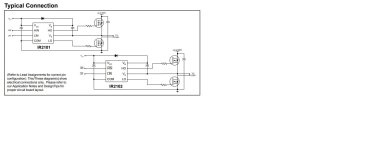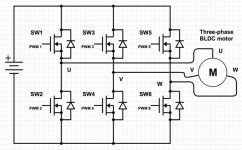Yes that makes sense because most of the mosfets were once again blown, so the drivers must be defaulting to on or high to the gates. I was thinking mosfet shoot through also, but could not figure out why they would default to ON.
I cant test the drivers because upon connecting up to the battery, no throttle, I blow the fuse.....oops didnt read this..thanks for that
To test the drivers you'd leave the FETs off (so they aren't destroyed again and don't blow the fuse), and test for the correct output signals on the gate pin of the FET pad/trace, for all the hall combinations as you manually turn the wheel. (with motor connected to the controller, and controller connected to battery and turned on, and using just a tiny bit of throttle to cause the controller to try to turn the gates on).
I just ordered a cheap chinese made controller, the generic type with all the wires coming out; hopefully it will be
an easy connect with phase wires, halls wires and power switch
I noticed on the blown board that there were about 5 resistors from the halls sensor and power/ground wire connections, I assume those are pull ups but cant trace to where they go next. are those signal wires going back to the micro controller? was thinking about cutting that part of the board out, and putting in some leds after the pull ups and a 9V battery to make a halls tester
looking up my gate drivers they were IR 2101S. I understand how the top mosfet can be turned on with the HO driver out put but how can the bottom mosfet be turned on with a LO driver out put? It means, the bottom mosfet is at a lower potential, than the top in order for the current to flow to its source or ground? it seems that both N channel mosfets would require the same gate voltage to turn on. There are only 3 drivers so it means each driver is controlling a pair of N channel mosfets.

Oh, I think I see. The top mosfets gate must be higher than its source, since the bottom mosfets source is at ground, but I still dont see how the top mosfet gets turned on, if the bottom is off, without a path to ground, for the top mosfet.



